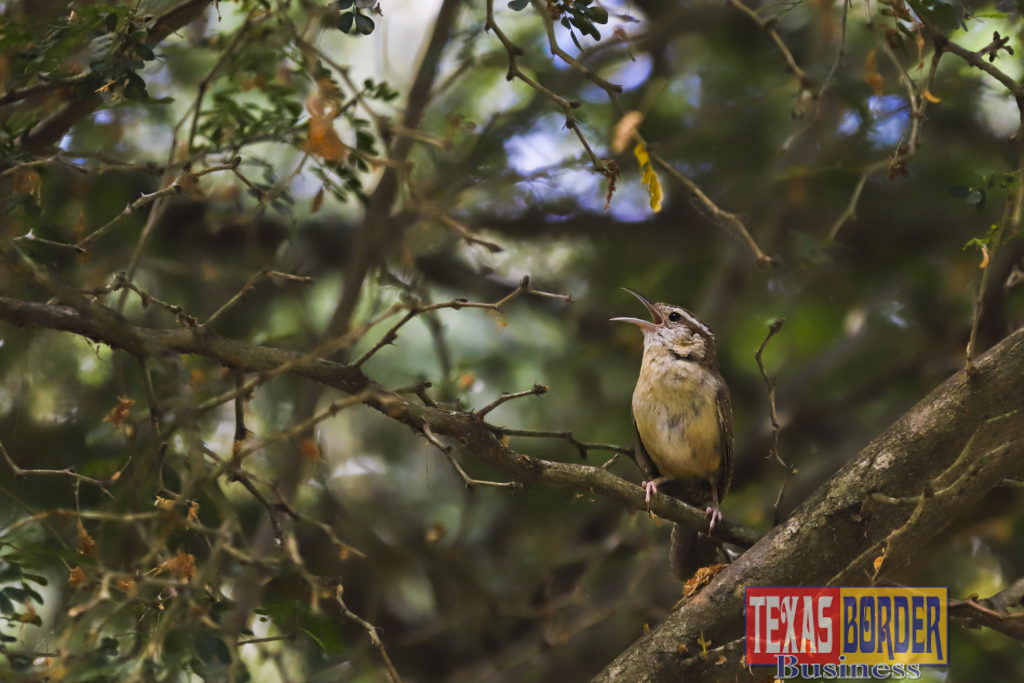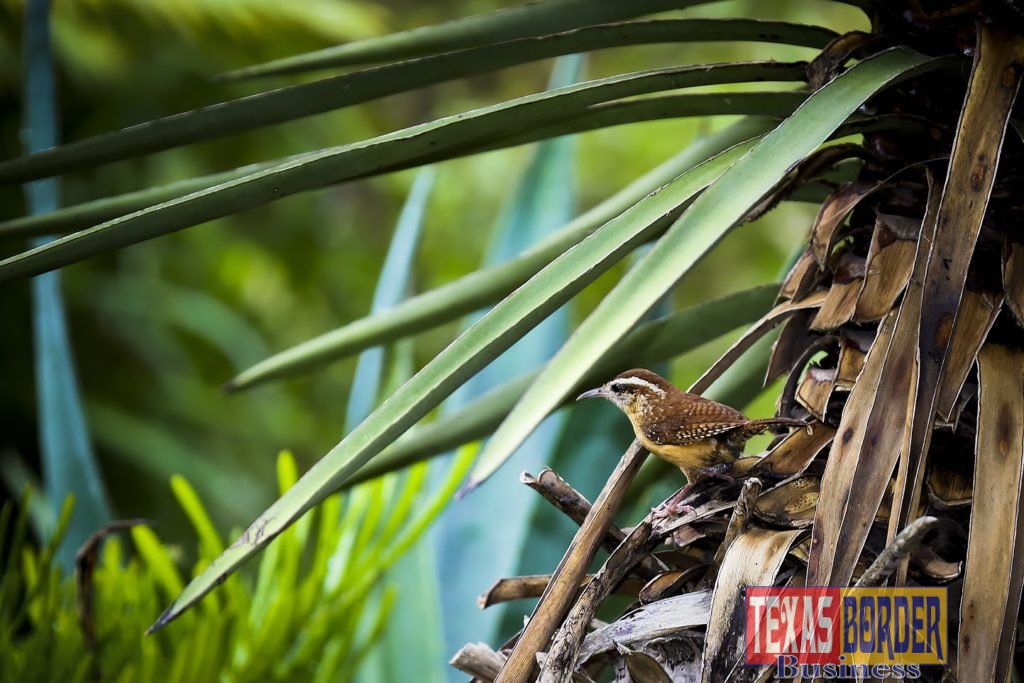
Texas Border Business
Carolina Wrens should get the prize for the most creative sites for building nests. They adopt a “su casa, mi casa” policy when it comes to nesting sites. Carolina Wrens will create a nest just about anywhere, whether natural or manmade. They’ve been known to nest in cowboy boots, hats, flower pots and mailboxes. Of course, they will nest in tree cavities in nature, but they seem to enjoy man-made homes and objects. At Quinta Mazatlán, we have a Carolina Wren nest and young in the rafters of the back patio.
Carolina Wrens are loud and often heard before seen. Only the male sings the loud piercing TEA-kettle, TEA-kettle, TEA-kettle song. Pairs may mate for life and communicate with each other through calls and songs throughout the day. The wren is a resident in Texas, and breeds from February to late August. They weave a domed nest with twigs, moss, bark and leaves. Scientists have found snakeskin sheds in their nests, proven to keep predators away. The inner cup holds 3 to 7 eggs, which are incubated by the female for two weeks. The male feeds his partner during this time. The young wrens leave the nest after just 12 to 19 days later.

Carolina Wrens are year-round residents of the southeastern United States and can live in many types of habitats but prefer wooded areas. They are territorial and guard their territory together using their calls to advertise their presence. These small 5-inch birds are ground foragers, and spend most of their time hopping on the ground looking for insects.
Ounce for ounce, the Carolina Wren is the loudest little guy in the woods. The take-away for the Carolina Wren is based on a quote from Mother Teresa, “Do small things with great love”. Enjoy the wonder of nature at Quinta Mazatlán in McAllen, Texas. Follow the Quinta Mazatlán YouTube Channel, Facebook and other social media platforms to learn more about our natural heritage in South Texas.












